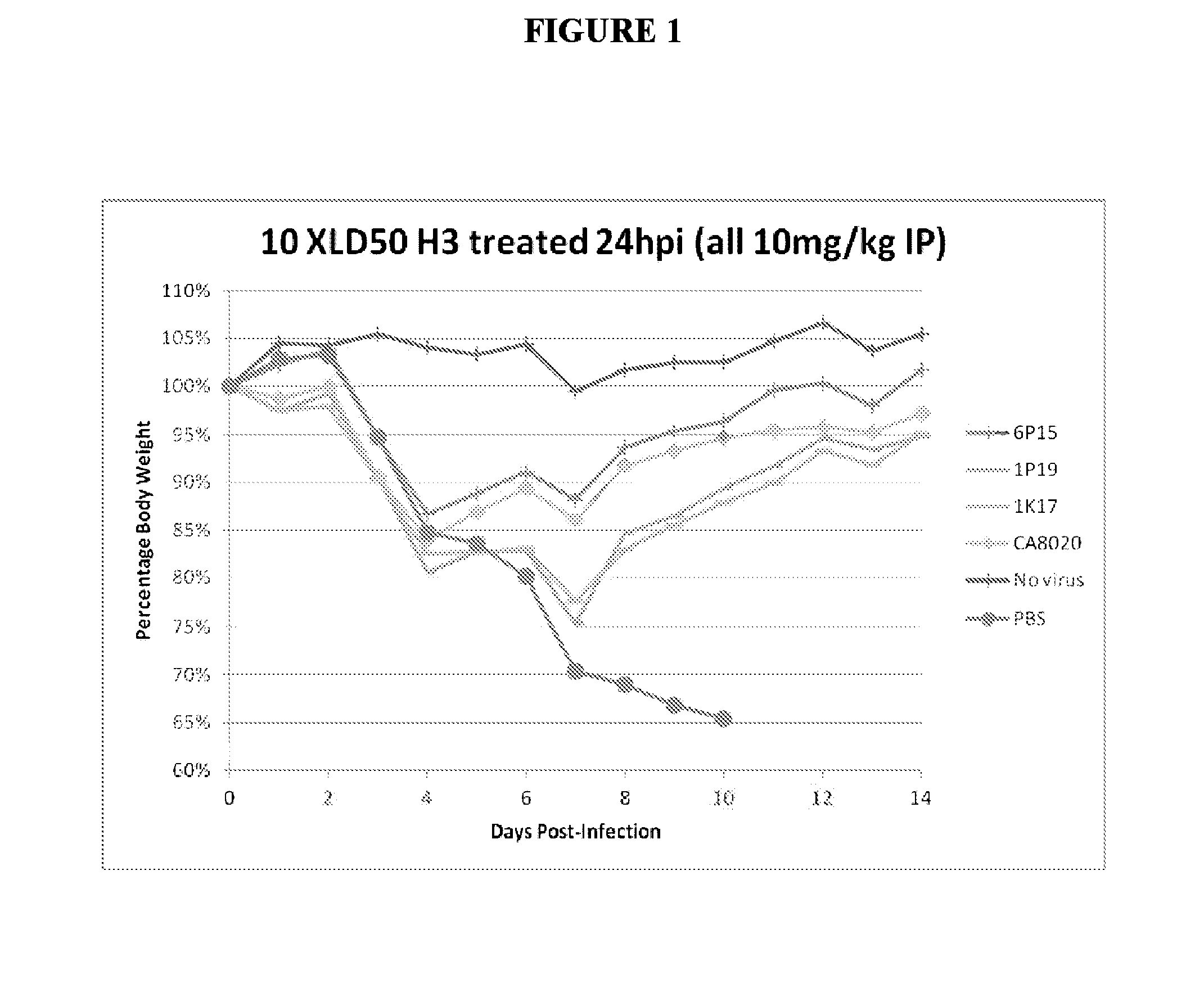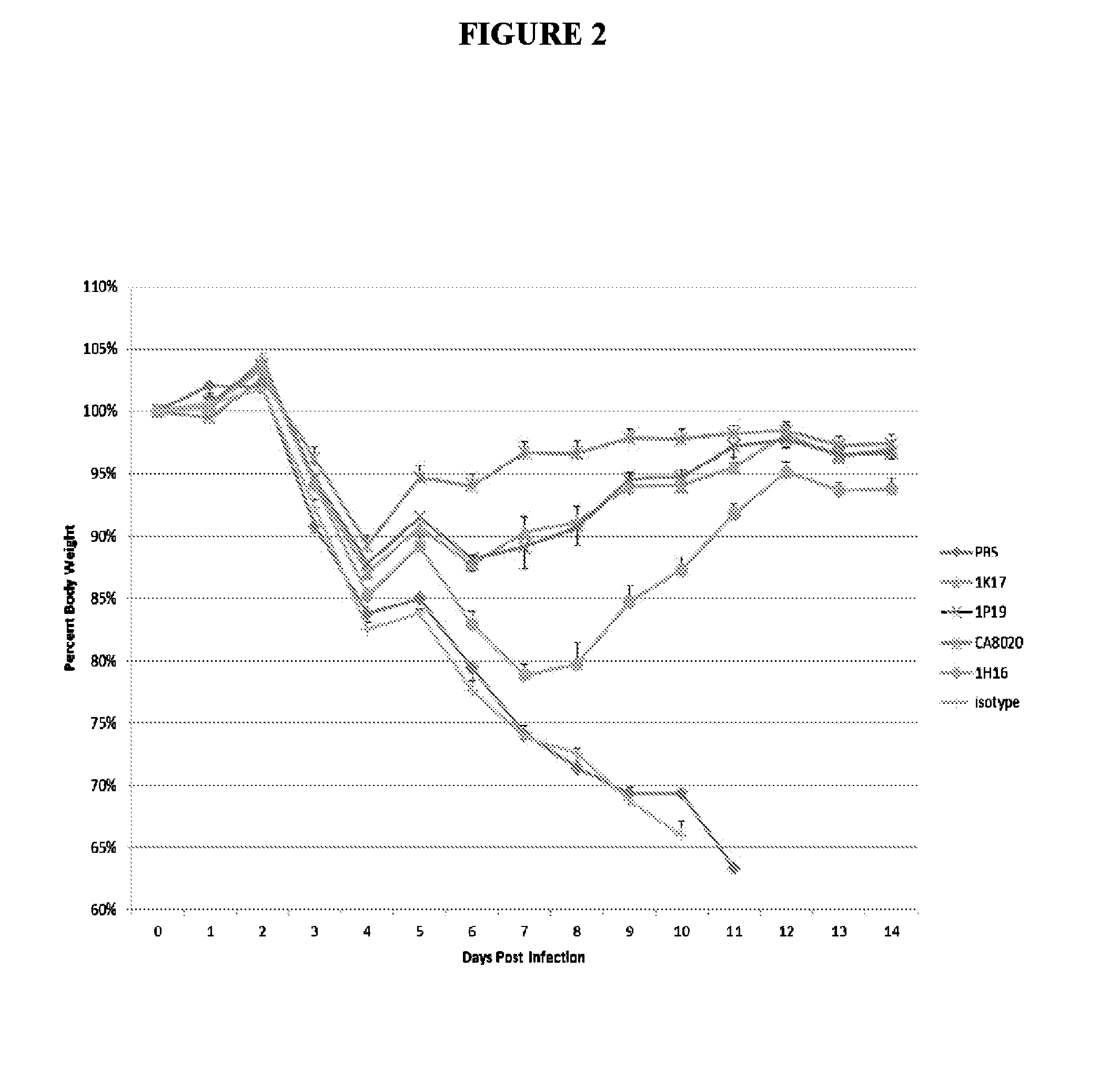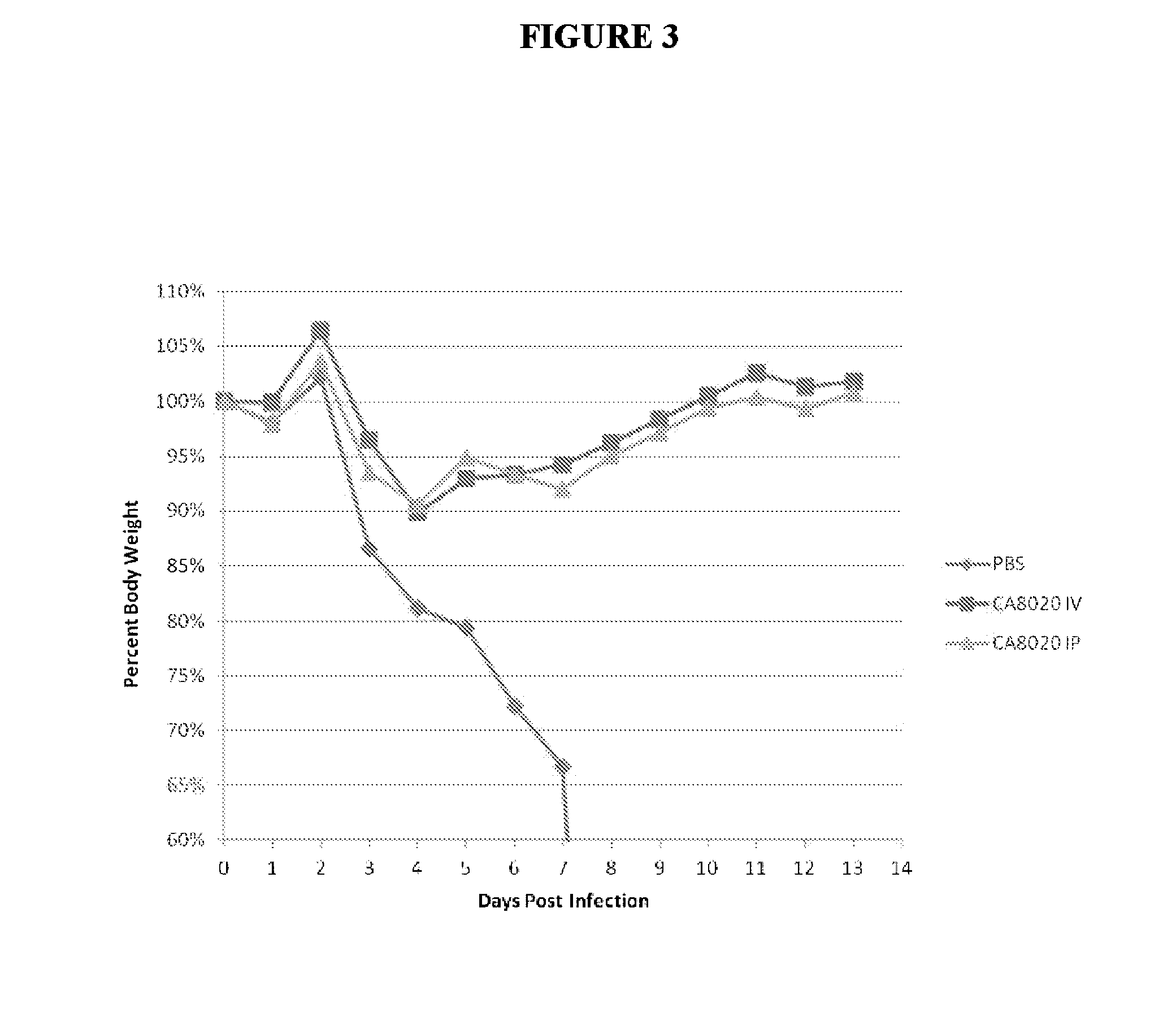Composition and methods based on neutralizing antibodies delivered intranasally for enhanced therapeutic efficacy
a technology of neutralizing antibodies and intranasal delivery, applied in the field of respiratory infectious agent treatment or prophylaxis, can solve the problems of ineffective and inadequate current influenza treatment, death and illness of upper and lower respiratory tract, and the inability to shut down schools and commercial establishments, so as to achieve superiority, more efficacy and effect, effective treatment and prophylaxis of viral infections
- Summary
- Abstract
- Description
- Claims
- Application Information
AI Technical Summary
Benefits of technology
Problems solved by technology
Method used
Image
Examples
example 1
[0202]Therapeutic treatment of influenza with monoclonal antibodies to HA is dose dependent, and also requires higher doses at later times post infection. Typical therapeutic doses given IP or IV of broadly-reactive HA specific antibodies require doses ranging from 2 mg / kg to 50 mg / kg in order to see protection from lethal challenges. At later times post infection the same effect requires dosing in ranges that are above >10 mg / kg. An average adult weighs in North America is approximately 80.7 kg and would require 807 mgs of antibody if given 10 mg / kg. Two current phase 1 studies of influenza monoclonal antibodies CR6261 and CR8020 by Crucell Holland BV are assessing safety and tolerability in single doses escalating from 1 mg / kg to 50 mg / kg (trials NCT01406418 and NCT01756950 respectively; clinical trials.gov). In mice, these antibodies required 15 mg / kg to protect mice from death (Friesen, R H E et al (2010) PLoS ONE 5(2):e1906); Ekiert D C et al (2011) Science 333:843-850). As suc...
example 2
Neutralizing Antibodies are Effective Intranasally Experimental Studies
[0220]The therapeutic efficacy of systemically delivered antibodies is not solely reliant on neutralization capability, as both neutralizing and non-neutralizing antibodies given by IP route exhibit similar effects in treating and preventing lethal infection. Neutralizing and non-neutralizing antibodies were similarly effective when administered IP 10 mg / kg 24 hours post infection (24 hpi) (FIG. 1). The results shown in FIG. 1 demonstrate that systemically delivered antibodies against HA can exert robust therapeutic efficacy through effector function, as several non-neutralizing antibodies (6P15, 1P19 and 1K17) protect mice from lethal challenge to a similar degree as the neutralizing antibody CA8020. Neutralizing and non-neutralizing antibodies are similarly prophylactically effective given IP 1 hour prior to infection −1 hpi) with virus (FIG. 2). Similar results were seen at 1 hpi and using different viruses (d...
example 3
Neutralizing Fabs are Effective Intranasally
[0224]We next examined whether removal of the Fc will abrogate therapeutic efficacy of IP or IN administered neutralizing and non-neutralizing Fabs. As seen in FIG. 5, IP administered Fab (CA6261 antibody Fab) does not provide therapeutic efficacy against H1 virus at 10 mg / kg or lower. Mice treated with Fab IP all succumbed to infection similar to PBS treated mice. In contrast, mice treated IN with neutralizing Fab at a dose of 10 mg / kg and 1 mg / kg were able to survive lethal infection (FIG. 5). All doses administered IN (even to 0.1 mg / kg) showed greater efficacy than any IP dose administered. Comparable results were observed comparing CA6261 Fab IN versus IP or IV in the same experiment, where Fab CA6261 was not protective or efficacious when administered either IP or IV, but showed significant efficacy (animals retained 95% or greater body weight) when the same dose (5 mg / kg) was administered IN (data not shown). These data demonstrate ...
PUM
| Property | Measurement | Unit |
|---|---|---|
| Time | aaaaa | aaaaa |
| Time | aaaaa | aaaaa |
| Time | aaaaa | aaaaa |
Abstract
Description
Claims
Application Information
 Login to View More
Login to View More - R&D
- Intellectual Property
- Life Sciences
- Materials
- Tech Scout
- Unparalleled Data Quality
- Higher Quality Content
- 60% Fewer Hallucinations
Browse by: Latest US Patents, China's latest patents, Technical Efficacy Thesaurus, Application Domain, Technology Topic, Popular Technical Reports.
© 2025 PatSnap. All rights reserved.Legal|Privacy policy|Modern Slavery Act Transparency Statement|Sitemap|About US| Contact US: help@patsnap.com



